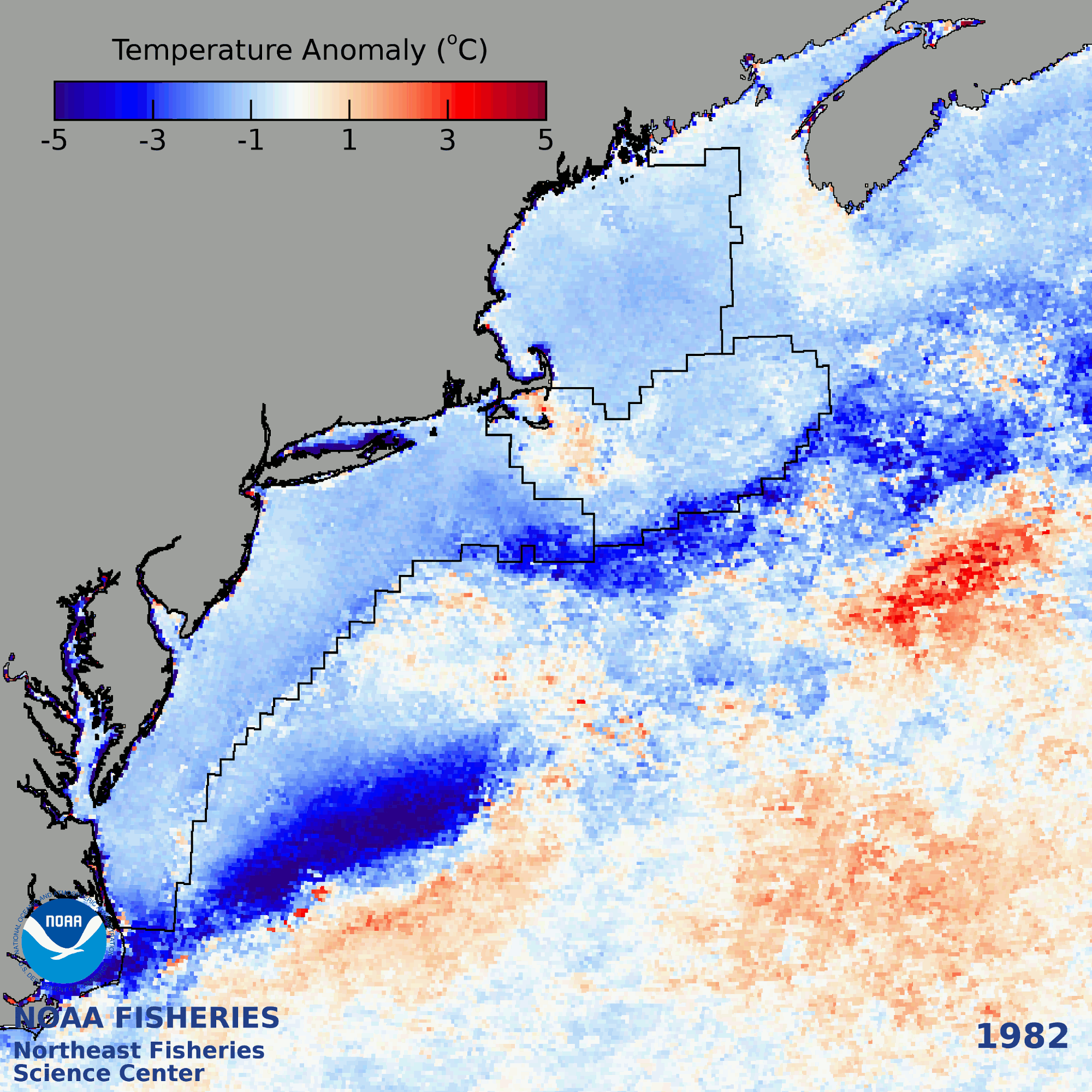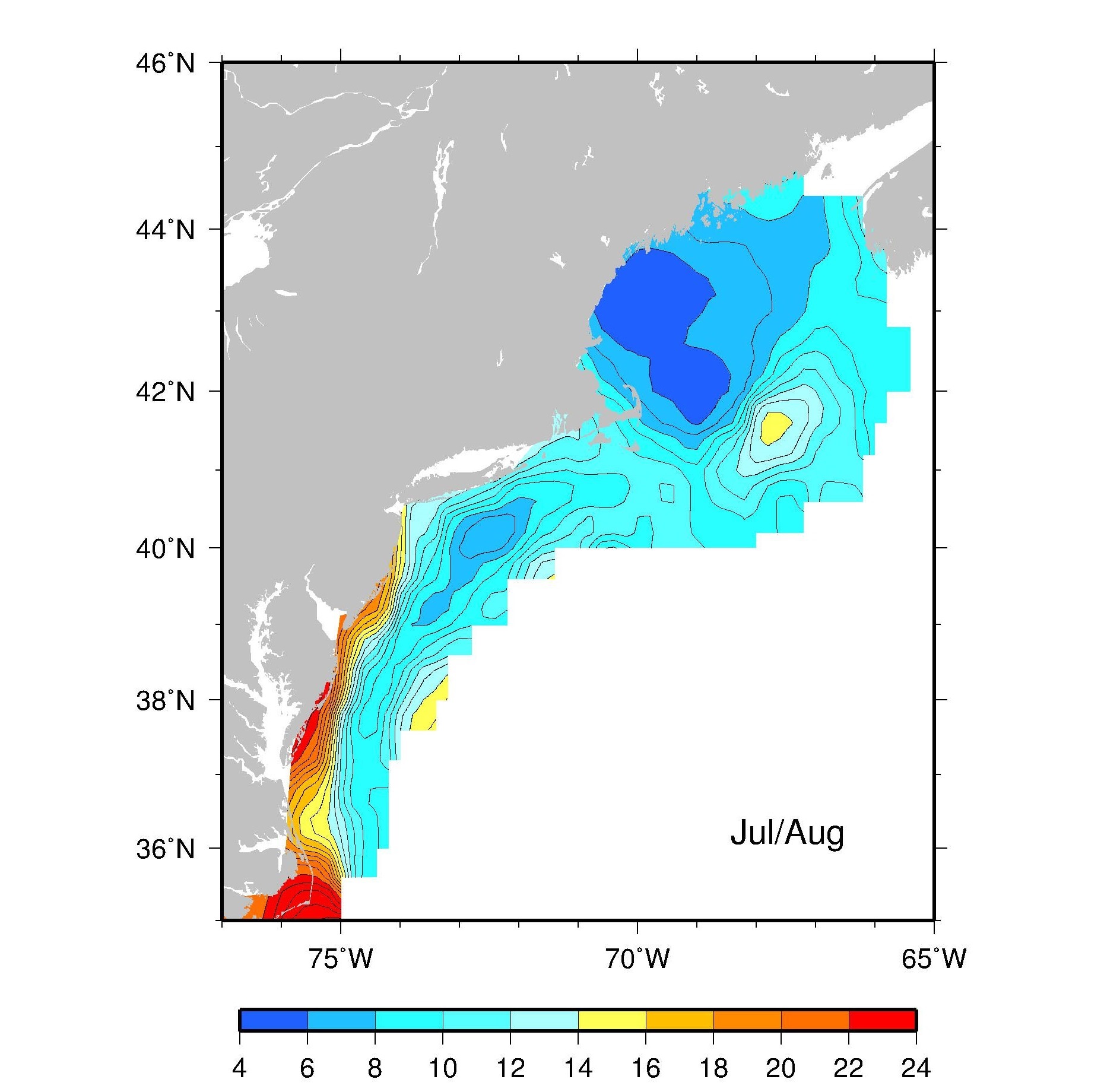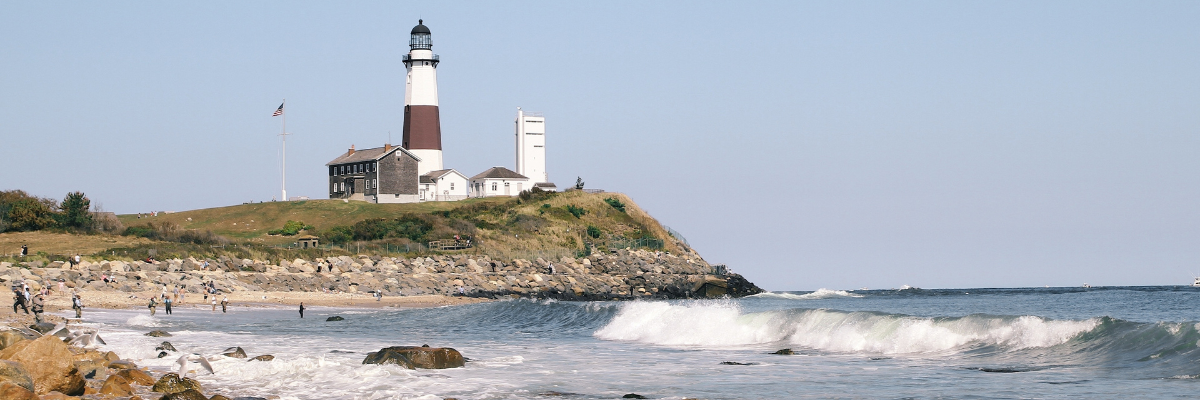Sea-surface temperature
Sea-surface temperatures (SST) in the U.S. Northeast Shelf Large Marine Ecosystem (NES-LME) are increasing at a faster rate than the majority of the world’s oceans, and these changes will undoubtedly affect the economy and ecology of the region over the next century. In Gulf of Maine and Georges Bank, Atlantic cod, haddock, and red hake among others are projected to lose much of their suitable thermal habitat, while some Mid-Atlantic species are projected to benefit from warming SSTs, including Atlantic croaker, striped bass, and rosette skate (Kleisner et al., 2017). Effects from changing ocean temperatures will likely reverberate through the trophic web. Changes to primary productivity and zooplankton community dynamics and will likely affect higher trophic level species, such as North Atlantic right whale, herring, and mackerel (Johnson et al., 2011).

Cold pool
The Cold Pool is a key oceanographic feature in the Mid-Atlantic Bight, consisting of a band of cold near-bottom water extending between Cape Hatteras and southern Georges Bank. A remnant of colder winter waters, the Cold Pool exists between spring and fall, separated from the surface by a seasonal thermocline and surrounded by warmer waters in the along-shelf and cross-shelf directions (Lentz 2017).
After formation, the cold bottom water that makes up the Cold Pool is advected southwest, slowly warming over the course of the summer. Ultimately, cooling of surface waters in the fall and wind-mixing leads to the dissolution and destratification of the feature.The Cold Pool serves as the southernmost habitat of some more northerly distributed species, including yellowtail flounder. Longer lasting and cooler Cold Pools have been associated with higher recruitment success of yellowtail flounder (Miller et al., 2016).

